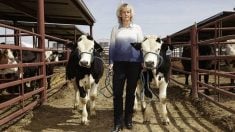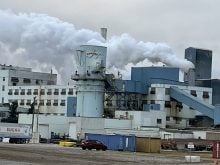The trend is your friend, says market adviser Mike Jubinville.
Since the canola rally began in June, the futures price has risen about 53 percent and there are many reasons to believe it will climb higher.
But there will be bumps along the way, said Jubinville of Pro Farmer Canada, and farmers should be particularly aware of forces outside the grain markets that could disrupt what is otherwise a rosy picture for crop prices.
Jubinville told farmers attending the Saskatchewan Canola Growers meeting at Crop Production Week in Saskatoon that strong demand for canola and soybeans is providing good support for the rally.
Read Also

Organic farmers urged to make better use of trade deals
Organic growers should be singing CUSMA’s praises, according to the Canadian Chamber of Commerce.
“Pricing opportunities are already looking pretty attractive, and we may see better ones yet over the next couple of months,” he said.
“But I also don’t want to get overly bulled up. We have all been through these boom and bust cycles before and when things look their most bullish and all the news is pointing 100 percent bullish, that is usually the moment this market can turn.”
Jubinville said he was holding off selling canola while the trend is up but was closely watching for signals of a downward correction, such as a trading day when the price rallies $20 to $30 per tonne but then closes lower.
Larry Weber of Weber Commodities was also bullish but had similar warnings.
The biggest threats to the crop price rally are related to policy and politics, he said. A sudden change in the U.S. policy of priming the economic pump with cheap money would shock the market. Another threat comes from government policies in China and India designed to control inflation in their heated economies.
“Nobody knows what the politician will do. And the politician will do whatever it takes to get votes,” Weber said.
Jubinville drew attention to the huge debt problems in the United States and Europe. How governments respond to the debt could have big impacts on their currencies and that in turn affects commodity prices.
Both analysts said the predicted battle among corn, soybeans, wheat and other crops for acres this spring in the United States seriously started with the U.S. Department of Agriculture supply and demand report Jan. 12. It lowered the estimate of the 2010 corn and soybean crops and lowered the year end stocks forecast for U.S. corn, soybeans and wheat.
Crop prices jumped sharply higher on the news.
“I don’t want to sound too 2008ish about this but every commodity needs acres again like we did when we had that perfect storm,” Jubinville said.
The need to rebuild supply creates an environment where, even if there are selloffs, they will be short-lived until it is clear that new production is on its way, he said.
In canola, strong domestic and export sales will take year end stocks down to a tight level. Weber thinks it will be 725,000 tonnes.
Seeded canola area this spring will climb to a range of 18 to 20 million acres.
“By the time air seeders hit the ground at the end of April, beginning of May, spot canola is going to be $14 or $15 (per bushel) and we are going to max out rotations like you wouldn’t believe,” Weber said.
And bullishness will likely last for several years, he said.
“I don’t think that as a farmer, in your career, that you are going to see better times than you are going to see in the next three to seven years.”
But while prices will generally be strong, there could be wild volatility, partly due to the large positions that investment funds hold in futures markets. This speculative money helps to push the highs of the market even higher but when the funds pull out money, it can cause sharp price reversals.
For that reason, it is more important than ever to have a marketing plan and use tools such as options to limit risk, the analysts said.














